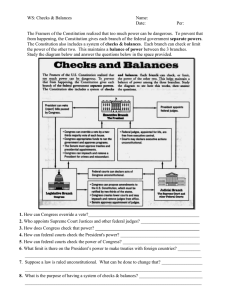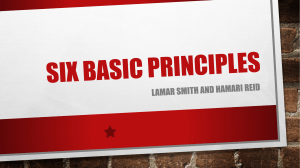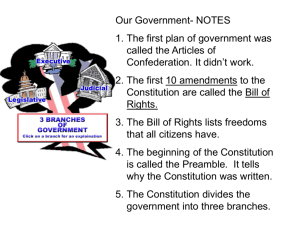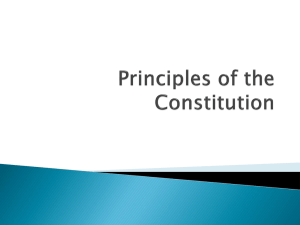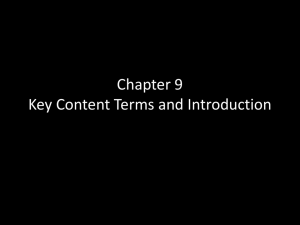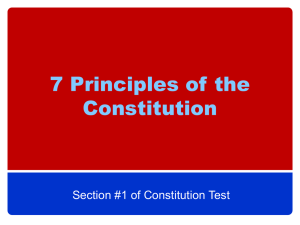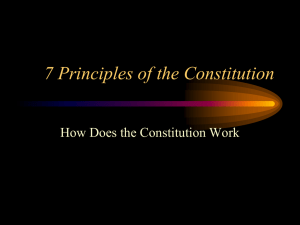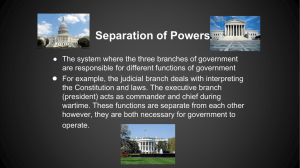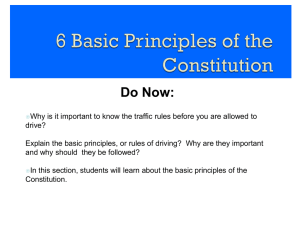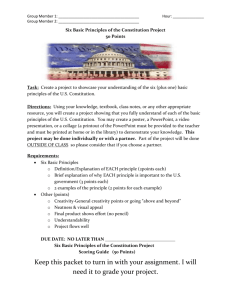Six-basic-prin.
advertisement
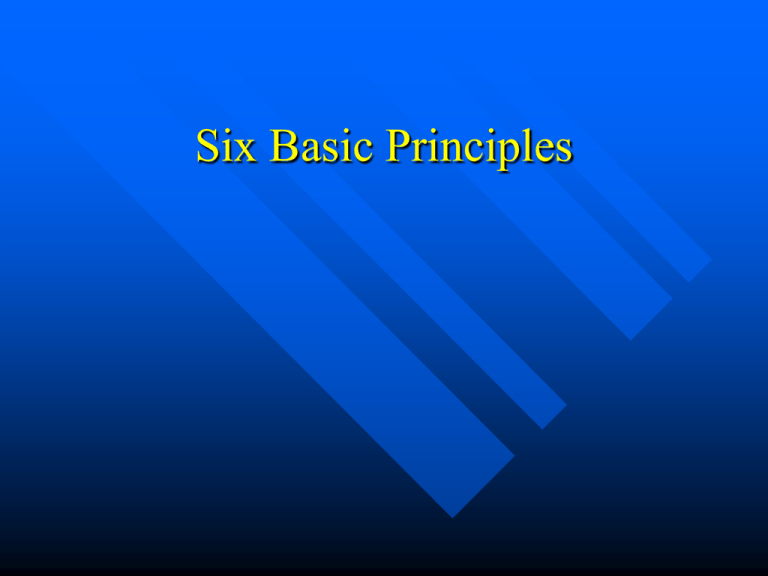
Six Basic Principles The Constitution did not give the American people many details about their government. Instead, the Framers wrote it around six broad ideas, or principles. Popular Sovereignty Popular sovereignty means that all government power belongs to the people. The people give the government the power it holds. Through the Constitution, the American people set up their government and told it what it could do. Limited Government Limited government means that the government has only the powers that the people give it. The government must obey the Constitution. And the people who work in government, its officials, must always obey the law. Separation of Powers Separation of powers means that three separate parts, or branches, share the government's power. These branches are the executive (president), the legislative (congress), and the judicial (courts). Each branch has specific jobs. Checks And Balances The Constitution made sure none of the branches could become too powerful. Each branch has ways to limit the power of the other two. This principle is called checks and balances. The president can say no, or veto, one of the congress's laws. Or Congress can refuse to approve an official the president wants to appoint, such as a justice of the Supreme Court. Or the court can strike down an action of the executive branch. At times, the branches have disagreed. Because of our democratic system and its checks and balances, the branches try to compromise. Judicial Review Judicial review is a part of the checks-and -balances system. This power lets courts decide what the words in the Constitution mean. The courts can also say if something the government does is unconstitutional, or against the Constitution. Federalism The Framers used the principle of federalism to divide the government's power between a central government and smaller regional governments. In the United States, this division is between the national government in Washington, D.C., and the 50 States.
